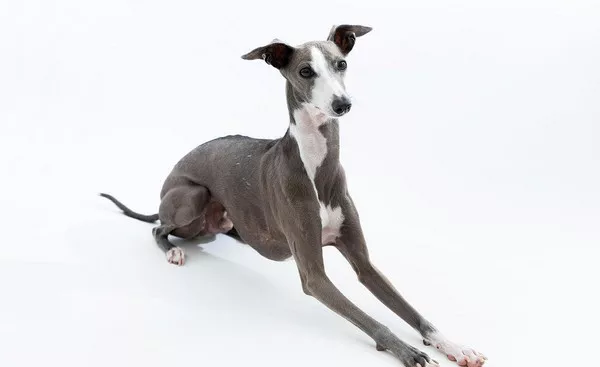Corn snakes are a popular choice for pet enthusiasts due to their striking appearance, manageable size, and generally docile temperament. Despite their name, the question often arises: Can a corn snake eat corn? The answer is straightforward—corn snakes do not eat corn or any other plant-based food. Instead, they are obligate carnivores, meaning their diet consists entirely of meat. But why is this the case? Let’s explore the biology, dietary needs, and natural behavior of corn snakes to understand this fascinating species.
The Origin of the Name “Corn Snake”
Before diving into their dietary habits, it’s helpful to clarify why these snakes are called “corn snakes” in the first place. Their name doesn’t come from eating corn; rather, it originates from two historical associations:
Agricultural Roots: Corn snakes were frequently found in cornfields or barns where their primary prey—rodents—would gather to feed on stored grains or crops. Farmers welcomed these snakes because they helped control rodent populations.
Appearance: The underside of a corn snake often features a pattern resembling maize kernels. This visually striking resemblance contributed to the “corn” aspect of their name.
This means their connection to corn is purely coincidental, tied to their habitat and markings rather than their diet.
Understanding the Corn Snake’s Diet
Natural Diet in the Wild
In the wild, corn snakes are strictly carnivorous. Their diet consists primarily of small mammals, birds, lizards, and occasionally amphibians. Juvenile corn snakes often begin their lives by preying on smaller animals like frogs, insects, or pinky mice (newborn mice).
Their hunting behavior relies on constriction—a method where the snake wraps its body around its prey and squeezes until the prey can no longer breathe. Afterward, they swallow their meal whole.
Dietary Needs
Corn snakes require nutrients that are only found in animal tissues. Specifically:
Protein: Essential for growth, muscle development, and energy.
Fats: Necessary for energy storage and proper body function.
Calcium and Other Minerals: Found in the bones of their prey, critical for skeletal health.
Plant-based foods, including corn, lack the necessary nutrients to sustain a corn snake’s health. Unlike some reptiles that can digest plant material, corn snakes lack the enzymes needed to break down cellulose, a major component of plant matter. This inability makes plant-based foods not only nutritionally insufficient but also potentially harmful if ingested.
What Happens If a Corn Snake Eats Corn or Plant-Based Foods?
While corn snakes are unlikely to eat corn or plants willingly, an accidental ingestion could occur. Here’s what might happen:
Digestive Problems: Corn snakes cannot process plant material efficiently, leading to indigestion or impaction (blockage in the digestive system). This can be life-threatening if not treated promptly.
Nutritional Deficiency: Even if the snake managed to swallow corn without immediate harm, it would not gain the proteins, fats, or minerals it needs. Over time, this could lead to malnutrition, weight loss, or developmental issues.
If you suspect your corn snake has consumed something inappropriate, consult a veterinarian with expertise in reptiles immediately.
Caring for a Corn Snake’s Diet in Captivity
Recommended Food
In captivity, a corn snake’s diet should replicate what it would consume in the wild. The most common and appropriate food items are:
Mice: The staple diet for corn snakes, available frozen or live.
Rats: Suitable for larger corn snakes.
Chicks or Quail: Occasionally offered as variety or for larger individuals.
It’s important to feed appropriately sized prey—roughly 1.5 times the snake’s mid-body diameter. Overly large prey can lead to regurgitation or stress.
Feeding Schedule
Juveniles: Require feeding every 5–7 days.
Adults: Can be fed less frequently, approximately every 7–10 days.
Frozen vs. Live Prey
Most experts recommend feeding frozen-thawed prey rather than live animals. Frozen prey is safer because it eliminates the risk of injury to the snake (from a rodent bite, for example) and reduces stress for the owner. Always thaw frozen prey completely before offering it to your snake.
Common Myths About Corn Snake Diets
Myth 1: Corn Snakes Can Survive on Vegetables
As obligate carnivores, corn snakes cannot digest or derive nutrition from vegetables, fruits, or grains. Offering these foods can lead to health problems.
Myth 2: Corn Snakes Need a Varied Diet
While variety can be enriching, it is not essential. Corn snakes thrive on a consistent diet of properly sized rodents. Occasionally offering birds or other prey is fine but not necessary.
Myth 3: Live Prey Is Better Than Frozen
As mentioned earlier, frozen prey is often safer and just as nutritious. The idea that live prey is more “natural” ignores the risks of injury or stress to your snake.
Key Considerations for Healthy Feeding
1. Prey Size Matters
Always ensure the prey is an appropriate size for your snake. Feeding prey that is too large can cause regurgitation or stress, while prey that is too small may not meet the snake’s nutritional needs.
2. Feeding Environment
Feed your corn snake in its enclosure or a separate feeding container. Some owners prefer a separate container to avoid substrate ingestion, though this is not strictly necessary if you use an appropriate substrate like aspen shavings.
3. Monitor Feeding Behavior
Observe your snake during feeding. If it refuses food, check for signs of stress, illness, or improper husbandry (e.g., temperature or humidity issues).
Habitat and Husbandry: Supporting a Healthy Corn Snake
Proper care for a corn snake goes beyond diet. Ensuring an optimal environment helps keep your pet healthy and stress-free, which in turn supports a healthy appetite.
Temperature and Humidity
Temperature Gradient: Maintain a warm side of 85–90°F and a cooler side of 75–80°F to allow thermoregulation.
Humidity: Keep humidity levels between 40–60%, with occasional spikes during shedding.
Enclosure Size
Corn snakes need enough space to move around and stretch out fully. A 20-gallon tank is suitable for juveniles, while adults thrive in 40-gallon or larger enclosures.
Hiding Spots
Provide multiple hiding spots—one on the warm side and one on the cool side—to help your snake feel secure.
Substrate
Use a safe substrate like aspen shavings or paper towels. Avoid cedar or pine, as these can release harmful oils.
The Importance of Understanding Pet Biology
Misunderstanding the needs of a pet, such as assuming a corn snake might eat corn, highlights the importance of educating oneself about the biology of any animal in your care. Corn snakes are highly rewarding pets, but their care requires knowledge of their natural history and dietary needs.
By providing a diet that mimics their wild prey, you ensure your corn snake remains healthy and content. In turn, this understanding helps avoid potentially harmful mistakes, like offering inappropriate foods.
Conclusion
To answer the question directly: no, a corn snake cannot eat corn or any other plant-based food. These beautiful reptiles are obligate carnivores with a diet consisting entirely of animal prey. Their name, while misleading, has nothing to do with their dietary preferences. By learning about their natural history, diet, and habitat needs, you can provide your corn snake with a happy and healthy life in captivity.
Caring for a corn snake is a rewarding experience, but it requires understanding their biology and respecting their unique needs. Always remember: a well-informed owner is the key to a thriving pet.
Related Topics:
























